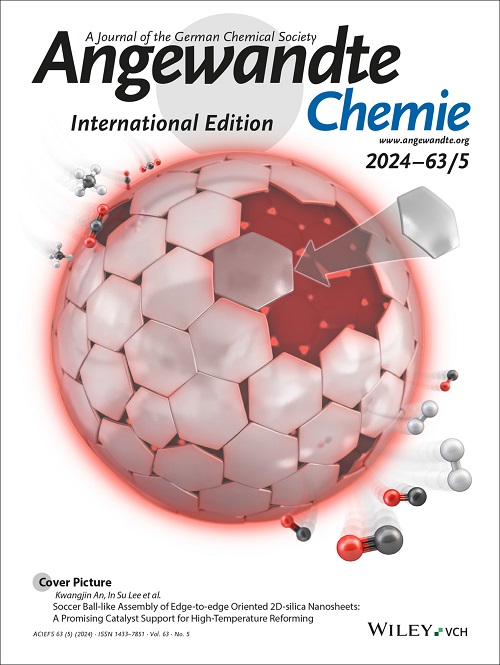Cooperative Redox Reactions Encoded by Two Gene Clusters Enable Intermolecular Cycloaddition Cascade for the Formation of Meroaspochalasins
IF 16.1
1区 化学
Q1 CHEMISTRY, MULTIDISCIPLINARY
引用次数: 0
Abstract
Meroaspochalasins (mAPOs) are a group of intricate heteromers comprising two distinct subunits, dienophile aspochalasin and diene isobenzofuran, of which the biosynthetic mechanism is of great interest yet unrevealed. In this study, two independent biosynthetic gene clusters (BGCs), flas and epi, being responsible for the biosynthesis of aspochalasin B (7) and pre-diene hemiacetal 21 (or 26), respectively, were identified in the filamentous fungus Aspergillusflavipes. In vivo and in vitro studies proved that a flavin adenine dinucleotide (FAD)-dependent oxidase FlasF in the flas cluster catalyzes the crucial oxidation to generate diverse aspochalasin monomers, particularly the dienophile 7. Interactive reduction catalyzed by the short-chain alcohol dehydrogenase/reductase (SDR) FlasG and endogenous NADPH further increases the complexity of this anabolic network. The cytochrome P450 enzyme EpiC and SDR enzyme EpiD in the epi cluster collaboratively catalyze the formation of pre-diene 21 (or 26), which can spontaneously dehydrate to yield a diene, leading to the non-enzymatic cascade of [4π + 2π] Diels-Alder and formal [5π + 2π] cycloaddition reaction to generate mAPO dimers and trimer progressively. Moreover, the FAD-dependent oxidase EpiG catalyzes the hydroxylation at the C3 position of the diene as a critical step in the formation of mAPO trimers.求助全文
约1分钟内获得全文
求助全文
来源期刊
CiteScore
26.60
自引率
6.60%
发文量
3549
审稿时长
1.5 months
期刊介绍:
Angewandte Chemie, a journal of the German Chemical Society (GDCh), maintains a leading position among scholarly journals in general chemistry with an impressive Impact Factor of 16.6 (2022 Journal Citation Reports, Clarivate, 2023). Published weekly in a reader-friendly format, it features new articles almost every day. Established in 1887, Angewandte Chemie is a prominent chemistry journal, offering a dynamic blend of Review-type articles, Highlights, Communications, and Research Articles on a weekly basis, making it unique in the field.

 求助内容:
求助内容: 应助结果提醒方式:
应助结果提醒方式:


